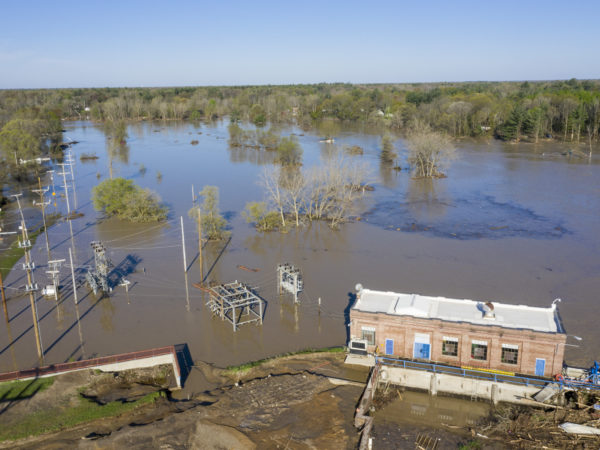
How fish adapt to life in large urban rivers, like the Chicago River, is one of the questions Dr. Austin Happel is trying to answer at the Shedd Aquarium.
“Knowing where different fish species are hanging out, we can look around that area and kind of understand what that habitat looks like and what it’s providing for them,” Happel said.
Understanding how fish utilize the river is such a key component of effective restoration that Happel, in partnership with Illinois-Indiana Sea Grant and Purdue University, has been tracking fish movements in the Chicago River.
With support from the Natural Resources Conservation Service, the researchers have placed 32 receivers in the Chicago River. From the northernmost to the southernmost, the receivers cover about 20 miles of river.
The tracking receivers are secured underwater a few feet off the river bottom. Each receiver records the identification number of all tagged fish that swim by.
Unlike tiny microchip tags that are easily inserted under fish (or your pet’s skin), acoustic tags require a surgical procedure. Researchers make a small incision in the fish’s belly, insert the tag, and suture the opening shut.
The size of the fish determines the size of the tag. A tag small enough for a sunfish to carry unnoticed may only have enough battery life to transmit for a few months whereas an adult lake sturgeon can carry an acoustic tag that transmits for several years.
Transmitter tags shout out the fish’s ID number at a randomized interval which is determined by the researcher. Less frequent transmissions conserve battery life but if the intervals are too far apart the fish may swim past a receiver undetected which creates choppy data sets.
Largemouth bass are one of the species that Happel is studying.
According to Happel, largemouth are the most popular sport fish in the Chicago area, so knowing more about their lives and what habitats they choose will allow the restoration experts to better support recreational anglers in the area and help boost the sport fish population.
As one of the top predators in the Chicago River, largemouth bass need a reliable food supply of minnows or similar small fish to survive. By tracking the largemouth bass, Happel hopes to locate where these tiny fish hang out.
Happel would also like to locate largemouth spawning locations. Largemouth bass spawn in the spring and they guard their nests for weeks. Tracking can help identify when and where they become stationary.
Tracking fish. (Photo Credit: GLN)
The banks of the Chicago River are lined with steel and concrete. This hardened shoreline offers limited natural habitat. Another question Happel is trying to answer is how largemouth are adapting to the lack of nearshore shallow-water habitat.
In June of 2023, Happel tagged a largemouth bass and was surprised when the fish spent the remainder of the summer and most of the fall in a boat slip on the South branch of the Chicago River.
Commercial barges once transported bulk goods, including animals from the Union stockyards, out to the Great Lakes and Mississippi River. The abandoned slips where these barges used to dock provide the sheltered waters that largemouth prefer.
“Now fish are hanging out in them,” Happel said.
The largemouth Happel tagged remained in the same barge slip from June until early November.
“We got a cold snap that actually chilled the water. And we can see that that’s when he finally moved,” Happel said.
Once it started moving the bass went all the way to the northern receiver and then returned downtown. Happel said the bass repeated this trip up and down the river throughout the winter.
“Actually, all the way into April he’s doing these trips,” Happel said. “We think he’s seeking out water that’s warmer than where he was during the summer.”
Some buildings intake river water to circulate through their heating and cooling systems before being discharged back into the river. Happel suspects this provides a bit warmer water in the downtown core during the winter.
Another warm spot is in the North Shore Channel where a wastewater treatment facility discharges warm water. Happel said treated wastewater is often warmer and largemouth seek out these warmer spots in the winter.
“What’s neat is come April, he returns to the same spot,” Happel said, “like a creature of habit coming to his summer home back into the South Branch barge slip area.”
Acoustic telemetry is helping researchers answer questions about where fish go in the winter, where they spawn in the spring, where they hang out all summer, how they respond to times of poor water quality, what areas they avoid, and where they seek refuge.
Knowing where these things happen provides a roadmap for restoration efforts and a greater understanding of how fish are adapting to life in large urban cities like Chicago.
Catch more news at Great Lakes Now:
I Speak for the Fish: A Sturgeon goes to Wisconsin and a Michigan muskie visits New York
I Speak for the Fish: Hand-feeding a rainbow trout is fun, but is it ethical?
Featured image: Tracking fish. (Photo Credit: GLN)




